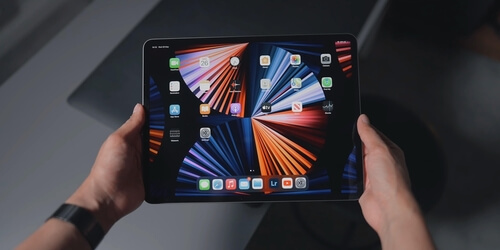How to Avoid Content Duplication When Scaling Globally with Headless CMS
As brands expand internationally and venture into new markets, one of the biggest challenges of achieving operation is content redundancy. When teams work in silos or when they have an outdated CMS through which they constantly need to retrieve content, the same campaign, product description, or asset is created and recreated worldwide with various teams lending a hand. Not only is this a time and resource drain, but it also impacts brand integrity negatively. A headless CMS provides the solution to scaling and expanding globally without the potential for such redundancies.
H2: Content Duplication Becomes an Issue When Scaling Global
It’s easy for content duplication to fly under the radar when operating across a few markets. But it occurs as soon as the opportunity to scale globally arises. For one product launch, there could be 25 localized versions of the same effort unintentionally created by different teams. Without a centralized system, the same copy, logos and even metadata get created time and time again…and again. Over time, it’s too cumbersome to locate and keep everything consistent globally, so one market keeps a 2-year-old image and product description while another updates its pricing. One market uses the image that corresponds to one market’s message but not the other. It creates customer distrust, ineffective teams and revenue-generating opportunities lost, not to mention increased potential for compliance issues.
H2: Why Legacy CMS Fail
Legacy CMSs fail the global enterprise approach because they bind content to display. This means that if an enterprise launches a new campaign that’s focused on a regional site, it needs to create pages, new sections, dedicated assets, etc. This creates even more siloed situations. Why choose Storyblok becomes evident here, as it enables enterprises to centralize content while still supporting localized flexibility. For example, a global apparel retailer may have European and Asian teams generate two different localized versions of the same effort, one updated but the other using outdated text not knowing content exists elsewhere. This makes new ventures expensive, time-consuming and impossible to create a single truth. Legacy systems encourage duplication that brands are frustrated to see happen.
H2: Where Headless CMS Alleviate Duplication
Dramatically. Headless CMS platforms remove this issue because they separate content from display and rendering. Instead of having to worry about pages, content exists as structured data that can be defined and reused across channels, even oceans apart. For example, a global airline may have one entry point for “Baggage Policy” but multiple variants for weight restrictions and associated fees. A baggage fee API can determine which variant should be viewed based on which regional websites, apps or check-in kiosks people are using. This means no matter what country someone is in, they’re being served the most appropriate and accurate narrative without duplication but without it appearing. The headless structure encourages reuse instead of duplication so scaling becomes effortless.
H2: Centralized Models with Local Flexibility
With a headless CMS, brands develop their own content models to differentiate what’s required for global consistency versus local flexibility. For instance, a global consumer electronics brand may have one parent product record with fields for technical specifications, warranty disclaimers and regulatory approvals that remain the same internationally. However, regions can change pricing, promotional copy and calls to action. This offers a situation where international assets can be funneled into one version of the truth, but regional teams can also have the liberties they need to exist in the most effective fashion. This balance reduces replication but ensures cultural and market relevance.
H2: Simplifying Translation
Often, replication happens merely through translation. With no governance or workflows in place, the same piece of content is being translated by regions who don’t know that others are also translating and replication runs rampant. Yet a headless CMS, coupled with translation management systems, creates the opportunity for translations to be completed once and used everywhere. For example, a content piece from a global SaaS company releasing a product enhancement can be sent out for translation in 15 languages, placed in the correct folders and utilized across all regional sites and apps. There’s no overlap in redoing efforts, language fidelity can be guaranteed, and products can go global sooner.
H2: Governance and permissions that promote consistency
Replication can also come from teams operating in silos without oversight. A headless CMS encourages governance within existing processes for permissions, roles and levels of approval. For example, a pharmaceutical company can lock its regulatory disclaimers so they can’t be changed at a local level, but it can open up permission levels for its marketing teams to alter the adjacent promotional copy. By creating standards at the content model level, brands can ensure that replication does not occur and that brand elements that need to be uniform for regulatory purposes are consistent everywhere. Governance breeds efficiency with accountability.
H2: Asset Reuse Across Channels and Regions
Without a single source of truth across brands, assets visual and multimedia are duplicated. Marketing teams will turn around the same video, for example, multiple times, with just differing subtitles or edits to cater to a separate region. A headless CMS prevents this from happening. There’s a global, centralized digital asset management library from which to choose. For example, a global car manufacturer uploads the master commercial to the CMS with the related subtitle tracks applicable to international markets. It sends out everywhere, never recreating the recreated version. It exists one time. This fosters consistency, avoids confusion, and ensures that creative can be reused without needing to add more work.
H2: Analytics to Identify and Reduce Duplication
Duplication can be avoided not just with organization but insight. A headless CMS comes embedded with analytics, helping a brand understand what’s being effectively reused and where duplication still exists. For example, a streaming service learns that regional teams are creating trailers instead of adjusting already existing modular trailers. With this analytics functionality, global leaders can troubleshoot, provide more training and help streamline the process. In time, duplication will be avoided and the reuse of content will naturally be integrated into every team’s workflow.
H2: Collaboration Across Global Teams
Collaboration is often the invisible project manager in many instances where duplication occurs, regional teams just decide to create their campaign version because they’re unaware another team already created/remixed the same asset. A headless CMS allows all campaign assets, translations and creative to live in one place so everyone has access to what everyone else created. For example, a film studio promoting its global blockbuster release can upload its global trailers and poster modules one time with the opportunity for localized markets to shift tag lines, voiceovers or artwork if need be. This structure encourages collaboration instead of working in silos, thus eliminating duplication and allowing for time-to-market for simultaneous releases.
H2: Seamless Integration for Seasonal Efforts and Events
Global brands often run the same efforts for seasonal campaigns, mother’s day, back to school or event-driven partnerships (i.e., premier league football efforts). Without a modular structure, each region likely recreates these efforts from scratch. A headless CMS allows for seasonal modules to be reused on a global level but localized easily. A consumer electronics company can run a global holiday campaign but then needs to re-localize its Diwali modules for India, Singles’ Day for China or Black Friday for the United States all without recreating efforts from scratch. This encourages a sensibility of not needing to duplicate while still allowing progress to make culturally relevant adjustments.
H2: Ensuring Not Duplicating Content Reuse Efforts is a Business Benefit
There are times when leadership needs to be sold on the fact that not duplicating efforts is a business benefit. Ideally, a headless CMS allows for tangible assessments of ROI whether through productivity, cost savings, or increased revenue. For example, a national retailer may find that with modular content reuse, production costs decrease by 30%, and time-to-market decreases by weeks. At the same time, a consistent brand voice from one department to the next increases customer trust, no matter if browsing in-store or online, and conversion rates show that trust. By correlating the findings with savings and revenue increases, proving that not bringing forth duplication is part of daily operations and a unique competitive advantage is simple.
H2: Future-Proofing Expansion Opportunities Globally and Omni-Channel
When brands go global or omni-channel, they find themselves at times in a position to duplicate efforts if systems aren’t scalable. A headless CMS will allow for future-proofing efforts with modular, channel-agnostic delivery of content. When brands enter new markets, they can easily adjust existing modules instead of starting from square one. When new channels open for AR shopping or VUI, content can be rendered in an instant without worry. This ensures that duplication is never a hindrance to product/service growth.
H2: Creating One Source of Truth for Product Information
The first area assessment that typically is littered with duplication across global brands is product information. Specifications, descriptions, compliance all get generated anew in regionalized systems, creating exists. A headless CMS helps brands create one source of truth for an asset, utilizing structured fields to output everywhere market/channel. Therefore, if a brand possesses one SKU for a backpack with subsequent colors, any updates to the original system will cascade automatically with zero duplication everywhere in seconds.
H2: Making Marketing and E-Commerce Function Together
Further, duplication occurs when promotional efforts through marketing and e-commerce exist in separate systems. Campaign content gets created one way and product detail pages get rendered another way creating unnecessary redundancies and disjointed messaging. By making both marketing and commerce coexist in one headless CMS, assets can connect from campaign modules to commerce functionality. For example, a clothing retailer can place a campaign once and the modules will automatically adjust to all regional clothing e-commerce sites, decreasing duplicates and increasing consistency.
H2: Content Creation Workflows Should Encourage Knowledge Sharing
Avoiding duplication isn’t just a technical challenge, it’s a cultural one. A headless CMS encourages knowledge sharing because everyone will have access to the content modules and assets. Areas of commerce can tag, annotate and highlight successful pieces of content so that others can edit as needed instead of starting from scratch. For example, if the campaign created in Europe around sustainability goes viral, those same modules can be adjusted for Asia or North America. When the content creation workflows support knowledge sharing, duplication isn’t needed, and overall efficiencies are achieved.
Conclusion
One of the biggest barriers to successful global scaling is the inability to duplicate content. Duplicated content costs time and money, reduces quality control and brand consistency and fails to achieve the best and fastest time-to-market. Content creation on a traditional CMS provides the lack of flexibility to avoid duplication. Traditional systems house brand assets in non-negotiable frameworks and siloed environments create duplication by accident.
A headless CMS provides the modular abilities to avoid duplication by housing assets in one place, encouraging localized efforts, and providing the frameworks necessary without unnecessary duplication.
With content repositories that exist in one place, translation services, best practices, governance, assets that can be repurposed, review and analytics, and opportunities to collaborate, a headless approach creates duplication and allows for reuse. Businesses can scale internationally with the speed, efficiency, and accuracy they need to preserve a singular international brand identity while creating authentically local experiences. Avoiding duplication is no longer just an operational best practice; it’s the way to achieve sustainable international expansion.
How to Avoid Content Duplication When Scaling Globally with Headless CMS Read More »










